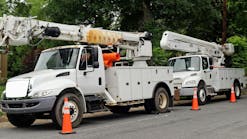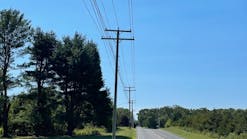In May of 1936, some 86 years ago, the federal Rural Electrification Act was enacted. As the name implies, its aim was to bring electricity to the country’s rural areas. When the act was created, nearly 90% of American farms had no power because it simply cost too much to build the infrastructure needed to deliver it to sparse populations spread across vast parcels of land.
The Rural Electrification Act was largely successful and changed the lives and lifestyles of many Americans, providing them with the creature comforts and economic opportunities that only those living in more populated areas had enjoyed.
During the nearly 100 years that electricity has been available to most people, it has transitioned from a luxury to a necessity, becoming the foundation of modern society. Few people living in the developed world, especially in the U.S., remember life without electricity. You might be surprised to learn, however, there are still pockets within in the U.S. where families are living in the dark, as well as without running water, refrigeration, air conditioning, and even mobile phone and computer charging, just to name a few. A large percentage of these people live in the Navajo Nation, a 27,000-sq.-mi Native American territory located in northeastern Arizona, northwestern New Mexico and a small part of southeastern Utah. According to its official website, the Navajo Nation is home to more than 250,000 people. The Navajo Utility Authority (NTUA), a not-for-profit tribal-owned enterprise created in 1959, is responsible for providing electricity, water, wastewater, natural gas, solar energy and communications services to its citizens.
Since its creation, NTUA has worked to build out services to all the Navajo Nation citizens, but there are still those living in the most remote areas of the territory who are without electricity. For these citizens, life has changed little. Many lived a 19th-century lifestyle during the 20th century, and some still live a similar lifestyle — more than two decades into the 21st century.
I first heard about NTUA’s efforts to electrify all Navajo Nation citizens in 2012 when working for a different industry publication that recognized standout utility CEOs each year. We selected Walter Haase, NTUA’s general manager, as one of those CEOs in 2012.
I learned from Haase that in 2007 NTUA had about 18,000 residences without access to basic electric service. Haase told me at that time the number represented about 75% of all U.S. homes with no access to the electric grid. He and his team worked for about two years to improve the utility’s financial situation and secure funding from several federal and state grant and loan programs, which helped pay for the infrastructure buildout to start adding these families the grid. With the infusion of those funds and other capital funding, the utility added around 700 families to the grid each year for the next few years.
It’s been 10 years since I spoke to Haase, and even though much of what he shared about Navajo Nation’s citizens has stayed with me, it hasn’t been top of mind, at least not until recently. A few weeks ago, I received a press release that highlights a program that was created through the American Public Power Association (APPA) to help NTUA accelerate its efforts to connect Navajo Nation citizens to the grid.
While NTUA has continued its efforts to provide electricity to all citizens, the mission is not complete. The press release revealed, however, that NTUA is getting help in the form of boots on the ground. Ten utilities and organizations from 11 states, including Arkansas, Arizona, Delaware, California, Connecticut, North Carolina, New Mexico, Ohio, Washington, Texas, Utah, and Washington D.C., are assisting NTUA. These public utilities and organizations have already sent, or soon will be sending, up to four crews of lineworkers each week to different locations throughout the Navajo Nation to help with this important program. The goal is to connect 300 family residents to the grid for the first time.
This current effort, which started on April 3 and will last 11 weeks, is the continuation of a program called Light Up Navajo that began in 2019 as a partnership between NTUA and APPA. The 2019 pilot program involved 138 lineworkers who represented 28 public power utilities from 13 states. These individuals worked alongside NTUA’s lineworkers for six weeks. During that time, they connected 233 families to the grid.
The program was clearly a success, so the partnership continued. About 150 public power utility lineworkers representing 48 utilities from 15 states were set to travel to Navajo Nation in 2020 for Light Up Navajo II. The COVID-19 pandemic, however, forced NTUA and APPA to postpone the project.
It’s great that this mutual assistance program is back on track. Mutual assistance is common with utilities, and T&D World has covered many catastrophic event’s where IOUs, cooperatives and public power utilities have assisted affected utilities with rebuilding and restoring power. It’s a program that should be a source of pride for everyone in the industry. The Light Up Navajo program highlights a different type of mutual assistance that few will experience. Each person and utility involved in connecting families to electricity for the first time are true heroes. Their work truly is life changing in a big way. Kudos to APPA, it’s member utilities and their hardworking lineworkers for lending assistance to NTUA in its important mission.


